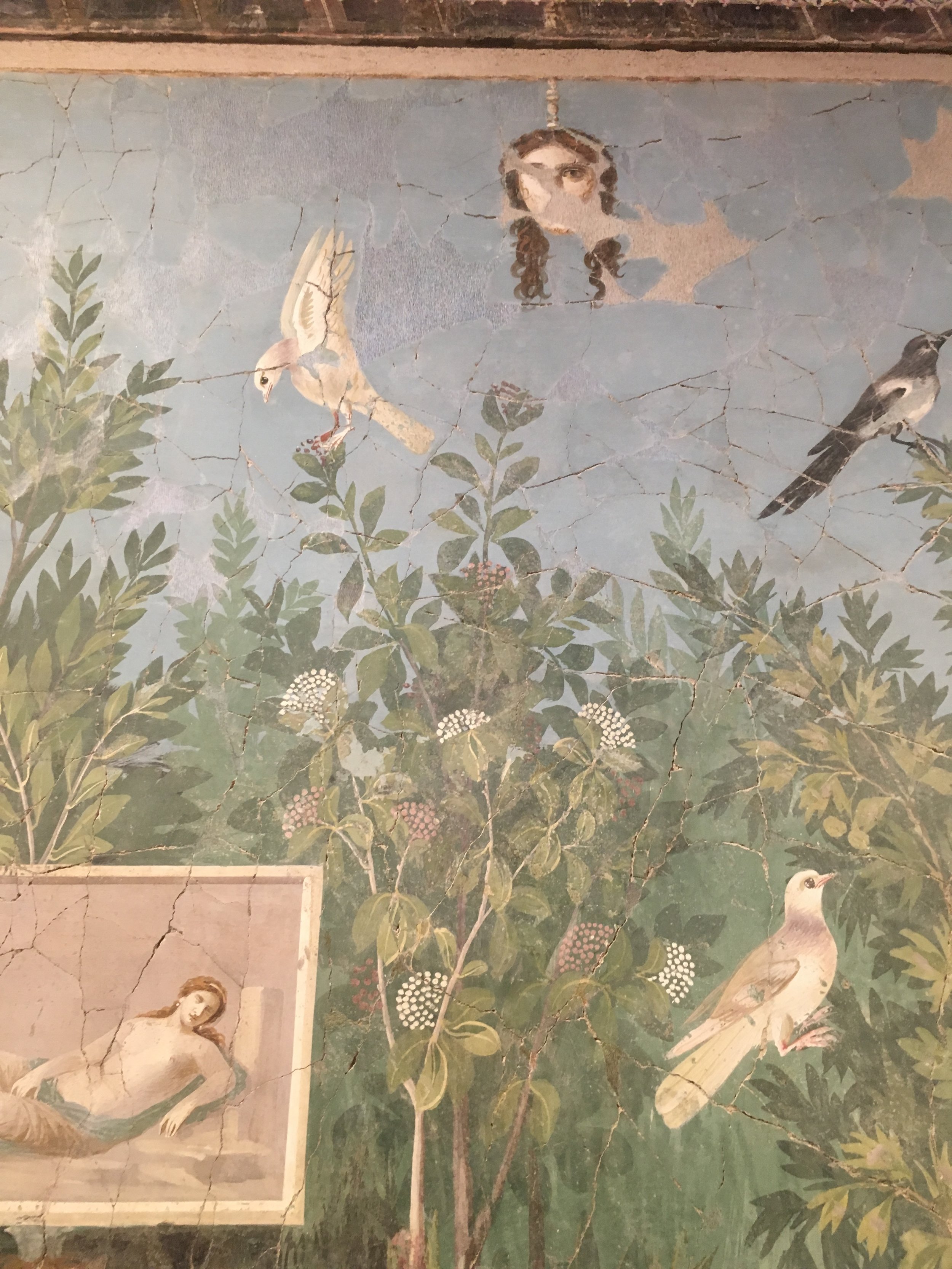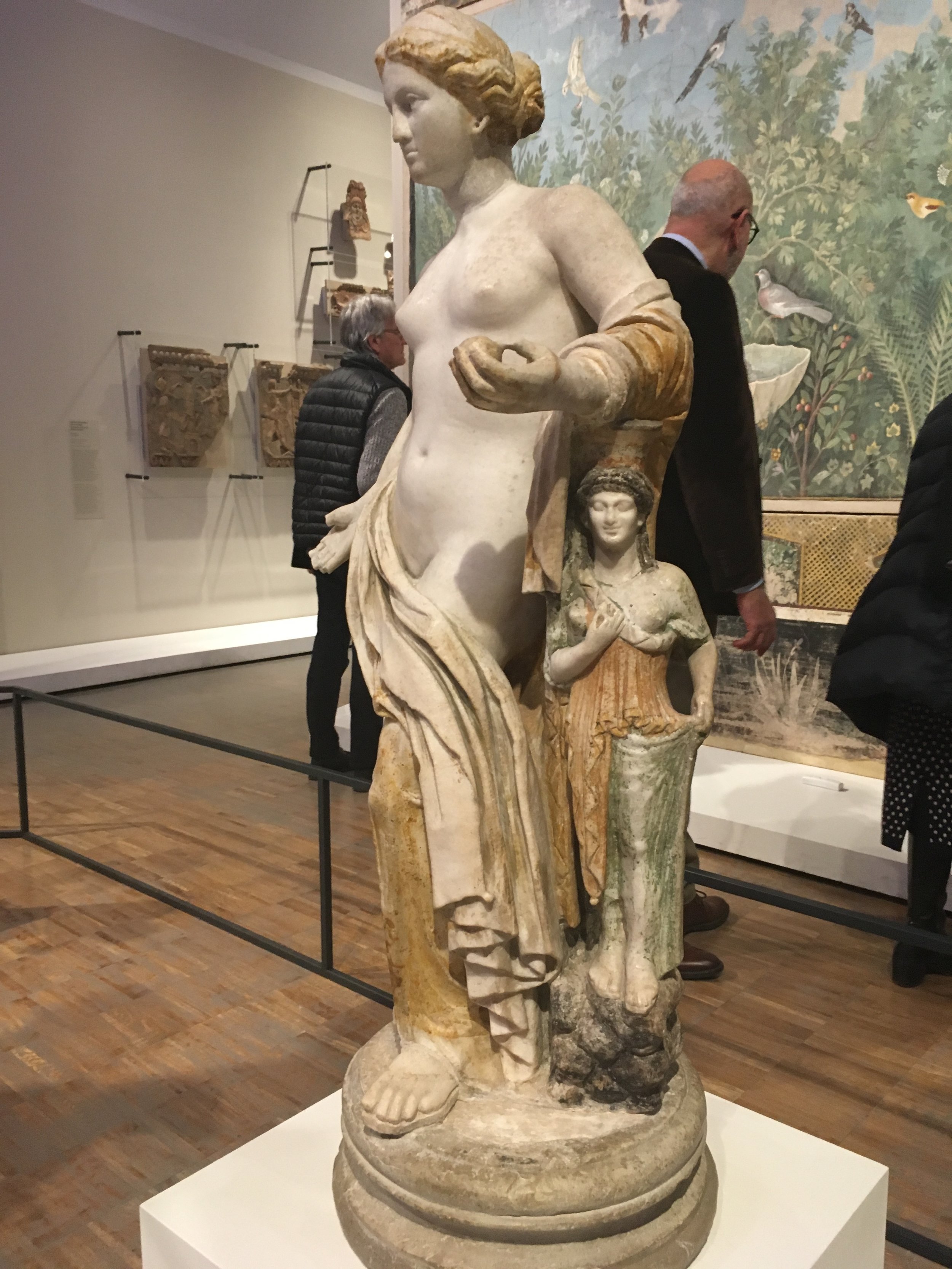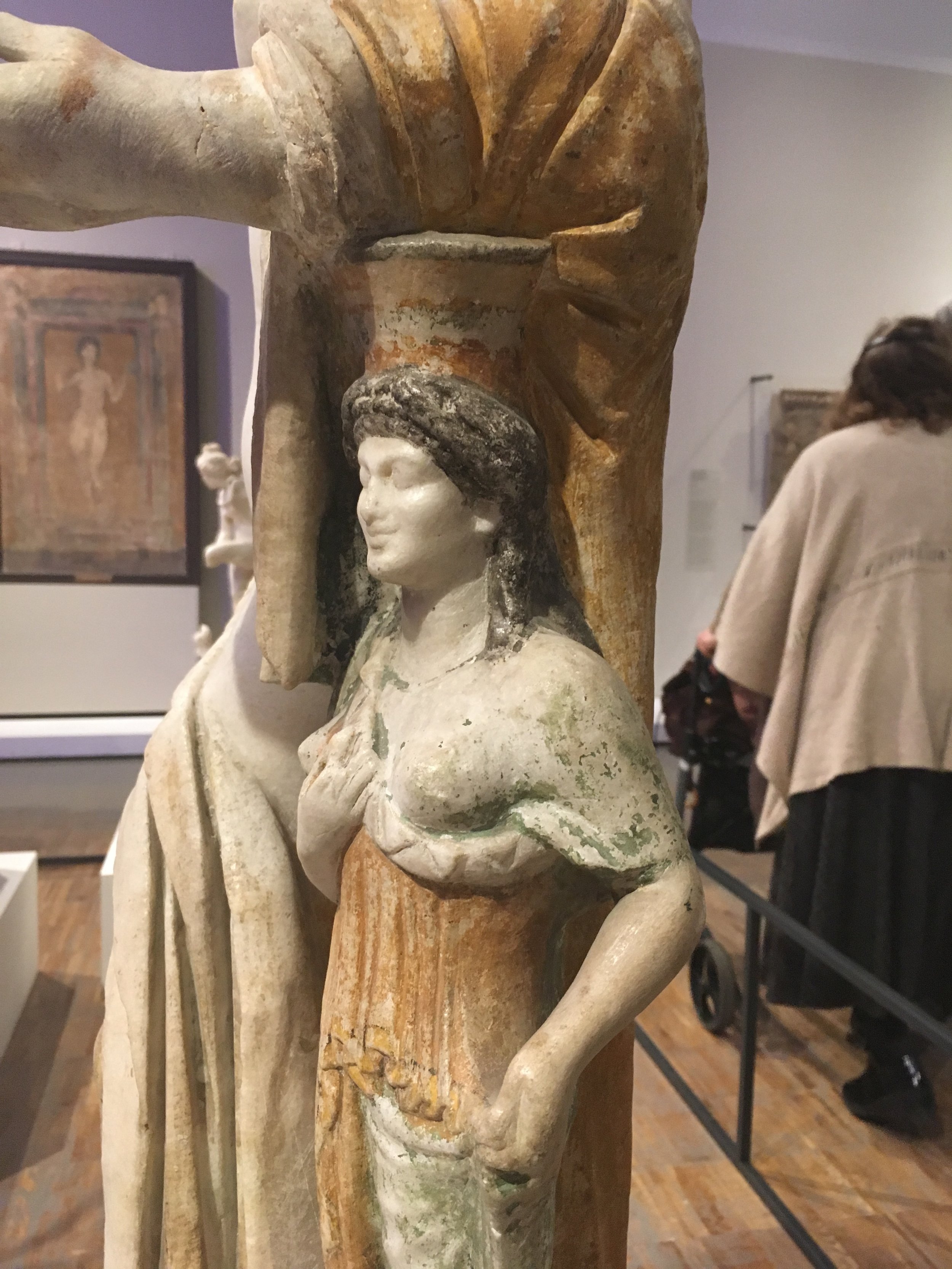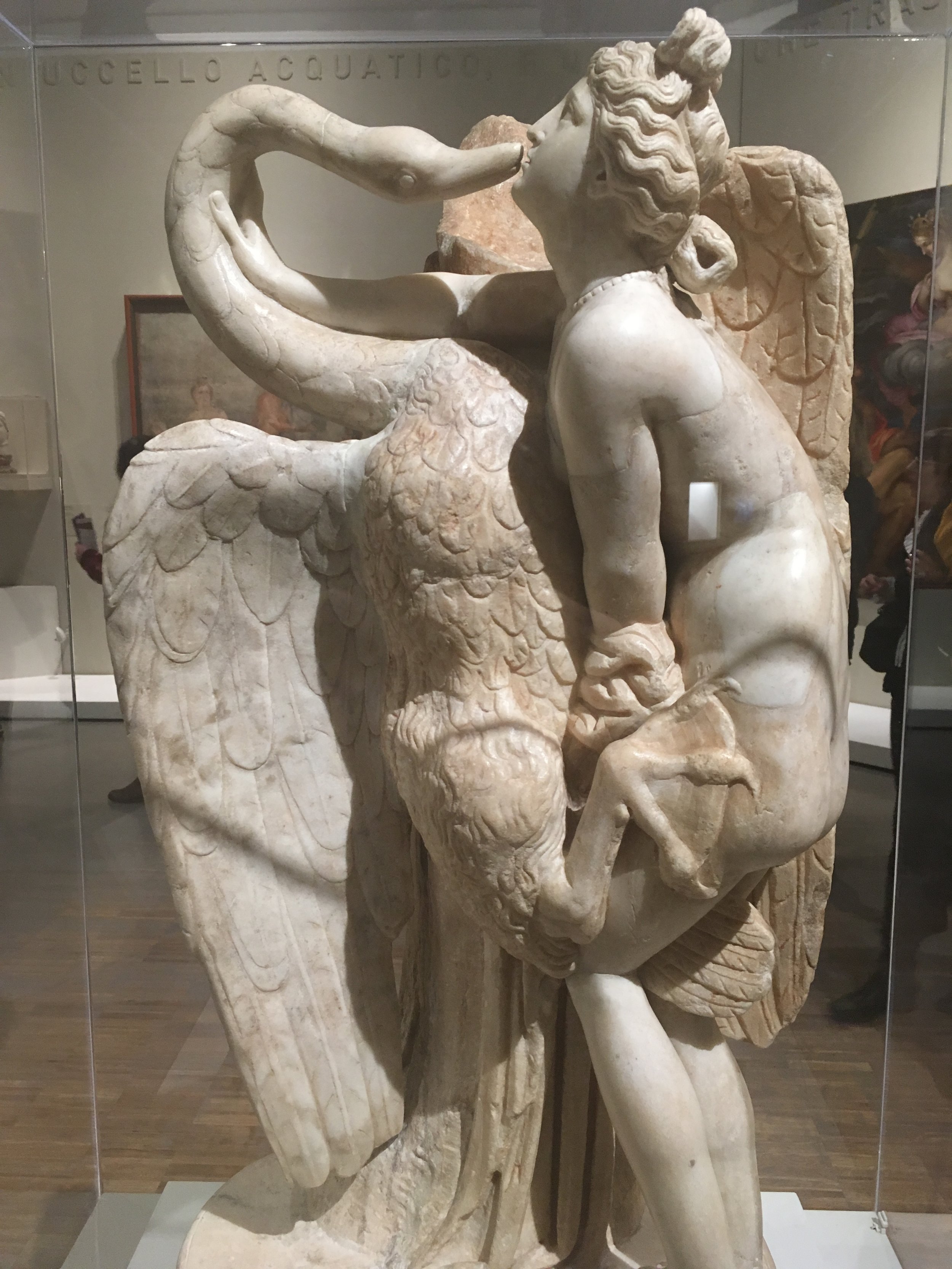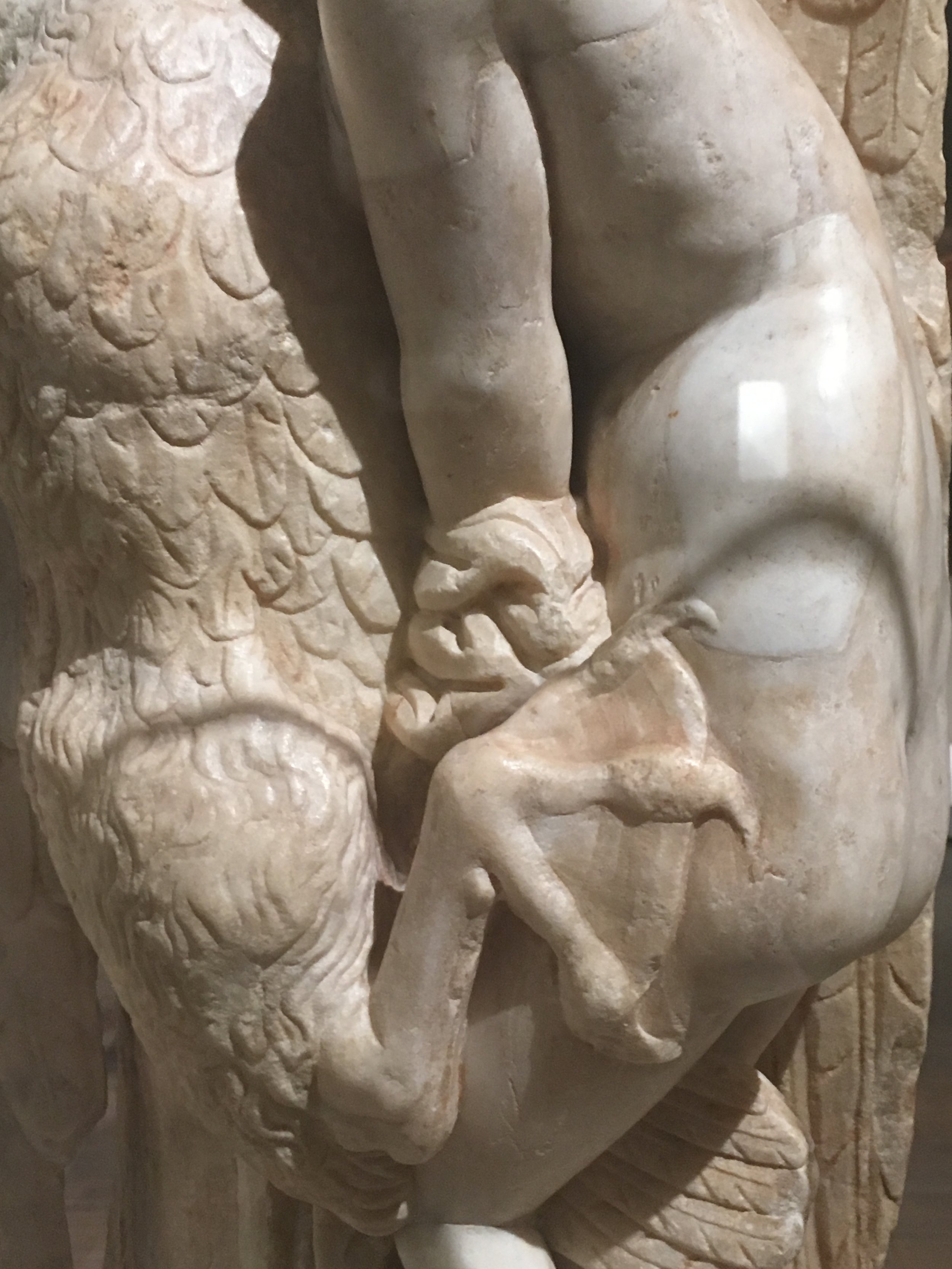Ovidio at the Scuderie del Quirinale [Review]
After a long hiatus, and with a backlog of posts—necessarily suspended since the dissertation reigns supreme—I’m starting to get back to this, beginning with what is most fresh in my mind. Yesterday I got out of the house and made my way up to the fantastic exhibition space that is the Scuderie del Quirinale (being the former papal stables, it has retained some of those features —especially the lovely, if dangerous, travertine sloping staircase up to the first floor). The arrival of a friend from New York, who will be spending several years here as a postdoc, and the impending closing date of the exhibition (January 20!) all gave me a good reason to go. And, well, it’s Ovid! Having seen a fantastic Frida Kahlo exhibition here a few years ago, I also had some expectations, in terms of curatorship and the quality of the show overall. Since most of these expectations were not met, I’ve decided to attempt something of a review (compare this one)…
You enter the show, up those sloping, slippery steps and encounter a small round room within a larger square room. The small round room contains illuminated manuscripts and the surrounding square has quotations from Ovid (the Metamorphoses) on the walls in neon lights by the artist Joseph Kosuth (entitled Maxima Proposito (Ovidio)). The manuscripts were interesting, but the explanations were minimal—why start with these (beyond the stated aim: we need to thank the monks for copying down Ovid)? And what relation do they have to the neon quotes? To be sure, Kosuth wants us to think about the text in a very different way than the manuscript tradition would; and to the curator’s credit, that’s an interesting proposition. For Kosuth has created one line aphorisms out of lines of the text that largely were not aphorisms in the first place; he has made something new out of the text. Many of the quotes are from the middle of a longer passage or sentence, yet the decision to excise them ignores that entirely—stripping them of their contextual meaning—and the translations ignore linguistic clues to their original context, such as conjunctions, and as translations go (if they are meant to be that?), many are plainly wrong. Take for instance this half-line quotation from Met. 15.255: Sed variat faciemque novat reads as “All have changed appearance”. This quotation comes from a much longer section on natural philosophy, but the way it’s rendered gives us an entirely different impression—something about the unreliable nature of the people we know? Our lovers? Read into it what you will. (The majority of the quotes seem to relate to the notion of change/metamorphosis, but also love). The translation gives an “all” (implying people) when originally the third person singular refers back to a negated quicquam in the previous line—“nothing”; the “but” of sed is also omitted and somehow we’ve moved from the present to the pure perfect. Now, to be fair, we might approach these neon quotes and their inaccurate translations as an adaptation of Ovid, but the thing is—many of the other quotes, maybe half, have perfectly fine translations.
From above one thinks of the “O” in Ovid… maybe that was intentional.
This inconsistency creates a jarring effect, so much so that we were left wondering if this was deliberate: Is he playing with multiple audiences, and playing with those who know the Latin and the text? You’d expect Classicists to be drawn to an exhibition on Ovid, and knowing them, they’d nit-pick the translations, too. As an interview with another exhibitor of Kosuth’s Ovid piece explained, “For Kosuth, the viewer completes the work: this way, the viewer connects with the creative conceptualizing process of the artist, rather than experience an artwork as a fragment of history or a retinal form of entertainment … The viewer is invited to approach Ovid’s writings in this setting, through a different lens, ultimately working through the ‘new’ meaning created by both artist and audience.” Perhaps this is what is at work; the “new” translations and the creation of “new” aphorisms that did not exist in the original text. Maybe this was supposed to rub me the wrong way. Or maybe I’m giving Kosuth too much credit. Ultimately, it felt gimmicky—a great way to get traction on Instagram for an exhibition that needs to sell 15 euro tickets—and more importantly, empty of what Ovid was trying to communicate and empty of any real meaning that might resonate today. Does “dulce / sweet” —a one word red neon light, say much to you? Maybe it does.
But on a broader level, it wasn’t clear what the manuscript room had to do with the neon room—at least not explicitly (and then, only loosely in an implicit way if I’m being kind)—beyond serving as a clever visual/spatial pun on the first letter of his name. This first disconnection, or lack of direction (from the curator) is symptomatic of a larger problem I (and my friend—who works on 18th c. art) had with the whole show: the unexplained juxtaposition of ancient representations of the Ovidian text (or less directly, the myths he represented) with the reception of Ovid in later periods. Rarely does the show attempt to ask what reception is, or how it works specifically in the case of Ovid; why certain works are placed next to each other, or why some works were included at all. Frequently many of the pieces included—and many are stunning!—only had a tangential connection to Ovid: they depicted (roughly) the same mythological episode he had dealt with, or they represented some of the key players in his biography (e.g. portraits of Marcus Agrippa, the Juliae, Augustus… you get the picture). For example, the famous altar from the vicus sandaliarius is part of the exhibition, but beyond the fact that it depicts Augustus and other debated members of the family, there is no real reason why it should be here (and if you’re going to show it—let us see the back side and put some light on! It’s backed up against a wall and in the dark). Again, the stunning garden fresco from the House of the Golden Bracelet in Pompeii is worth a visit to the exhibition simply to see it up close—but in the exhibition it only seems to form a lovely background for the statues of Aphrodite Callipyge and Eros that sit, clumped in front of it. There is also a stunning, smaller statue of Aphrodite from Pompeii with a lot of surviving polychromy . Many frescoes from the Naples Archaeological Museum also offer a rare visual feast, especially since so many of them are not usually on show in the museum itself.
Most of these pieces are mustered, however, in the service of a simplistic roll call of the most famous stories from Ovid’s Metamorphoses. Very little is said about his other works (e.g. Tristia, Ibis) and by the time you get to the second floor you begin to feel as though the show has become a free-for-all exposition of ancient myth and some of its later renditions. We encounter the Niobids, Actaeon, Narcissus, Icarus and Dedalus, Hermaphroditus, Daphne and Apollo, Marsyas, Zeus and Ganymede… and so forth. Each story gets at least one ancient representation, a short retelling of the myth, and often more than one medieval, renaissance, or later representation. Ostensibly the idea behind putting ancient and later pieces side by side was to create a dialogue between them. But without any real direction from the didactic panels (but for a few exceptions, e.g. how Narcissus was received in the medieval French poem, Le Roman de la rose—but even there we aren’t told why Narcissus was popular!), the viewer is left to figure that out for themselves. That task is hard—since very little information is given about the works themselves and many of the non-ancient works are from artists whose background is less known, such as a spectacular cycle of paintings in oils on copper plate from the artist Carlo Saraceni (1580-1620). Who was this guy? Why did he create such interesting compositions? Nada—you’ll have to look him up after the exhibition. But if you show five or six paintings by a single artist throughout a show, you’d expect to learn something about him and why he was engaging with Ovid. Beyond this type of explanatory content though, the main bone I have to pick with this approach of showing without telling is what it doesn’t achieve: We can see the “how” of Ovid’s reception (often very obvious), but the more important “why” is left unanswered in almost every case.
One particularly striking piece got me thinking about another, darker aspect of Ovid and Ovidio. The show features a statue in pentelic marble of Leda and the swan from the Venice archaeological museum. It’s an Hadrianic copy of a late 1st c. BCE statue (apparently—I need to look into this). The composition is particularly powerful and really communicates (the potential for its reception as) a moment of struggle, violation, desire, and fear—the outstretched arm of Leda on his neck, the talons of the swan on her skin. I was struck by how this composition might be received by viewers right now, especially women. Putting aside the technical aspects of the work, one might ask, what is the other arm/hand of Leda doing? Is she resisting? Is she experiencing trauma, pain, or pleasure? Are her eyes wide stricken with fear and shock, or pleasure? If this exhibition were shown in the US, it would need an entire overhaul.
Considering how fraught teaching Ovid has become in the trigger-warning / #metoo classroom (for a great treatment of rape in Ovid with links to more scholarship, see A. Everett Beek’s article and more specifically on Leda and the swan, see this Harvard student’s piece), this piece and many others open up issues that don’t seem to be considered at all in this show (or, perhaps, Italy). To begin with, the didactic panels (I can’t speak for the audio guide) don’t seem to deal with the issue of rape and consent in the ancient world and they merely describe Ovid’s women as “desired, raped, betrayed, abandoned, and finally, transformed into goddesses”. Nor is the reception of Ovid’s rape scenes in the art of later periods interrogated or analyzed (though none of the art ventures beyond the 18th century—a conscious choice?). Because museums and exhibitions perform a didactic role in society, much like the classical classroom, if you’re going to show Ovid’s many rape scenes and stories, then for the 21st century you really should begin to address that elephant in a thoughtful and engaged way. Instead, in this exhibition we are left with silence, a panoply of images of rape (and their continuous re-depiction and redeployment by [mostly] male artists for male patrons), and the possibility that these rapes could/should be just seen as “loves”. As my companion for the exhibition remarked on encountering a renaissance bedhead depicting all of the many rape scenes (and a few other stories) from Ovid, with Ganymede’s abduction in the central panel: “What on earth is this doing here without any explanation?”. A piece that may have functioned as a sinister source of ekphrasis for its owner (who knows?) or merely pillow-talk? Nonetheless, a critically aware version of ekphrasis is what this show so often lacked.
In short, if you have the chance, “go for the art, not the message”. I probably expected too much from this show—and too much from an Italian celebration of Ovid. Because that’s what it is in many ways. Ovidio is not Ovid for the 21st century we want to see (or should), but rather sadly, frustratingly and predictably, it is just another sign that the Ovid of previous centuries still survives today—unexplained, and, unquestioned.



